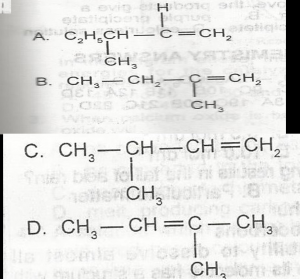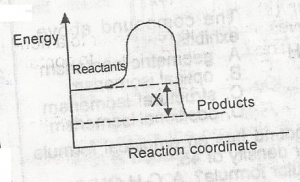
In the diagram above , X is the “
- A. enthalpy
- B. enthalpy change
- C. activation energy
- D. activated complex
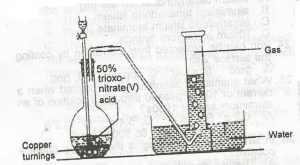
In the diagram above, the gas produced is?
- A. NO
- B. NO2
- C. N2O
- D. N2O4
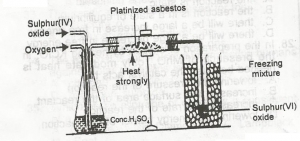
In the diagram above, the purpose of the asbestos to?
- A. absorb impurities
- B. catalyze the reaction
- C. solidify the gas
- D. dry the gas
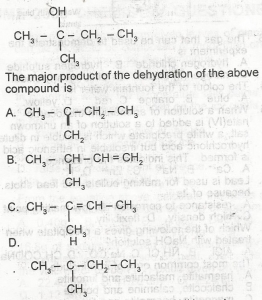
Choose the correct option from the structure above
- A. A
- B. B
- C. C
- D. D

Use the diagram to answer this question.The colour of the fountain water is
- A. blue
- B. orange
- C. red
- D. yellow
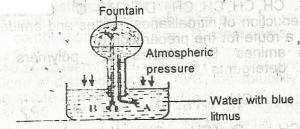
Use the diagram to answer this question. The gas that can be used to demonstrate the experiment is
- A. hydrogen chloride
- B. hydrogen sulphide
- C. nitrogen(ll) oxide
- D. dinitrogen (l) oxide
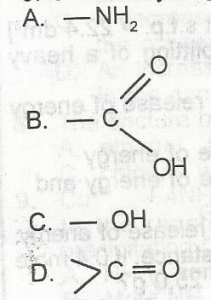
Which of the following functional groups will give gas bubbles when treated with a saturated solution of sodium hydrogen trioxocarbonate (IV)?
- A. A
- B. B
- C. C
- D. D
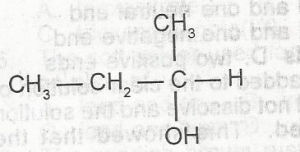
The oxidation of the compound above produces
- A. 2-butanone
- B. 2-butanal
- C. 3-butanal
- D. 3-butanone
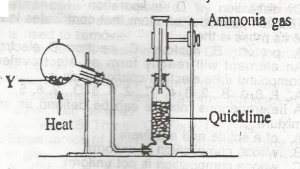
In the diagram above, mixture Y is
- A. NH4NO3(s) + CaSO4(s),/sub>
- B. NH4CL(s) + NaNO2(s)
- C. NH4NO2(s) + Na2SO4(s)
- D. NH4CL(s) + Ca(OH)2(s)
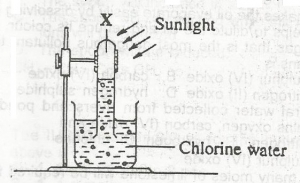
In the diagram above, gas X is
- A. hydrogen
- B. chlorine
- C. oxygen
- D. hydrogen chloride
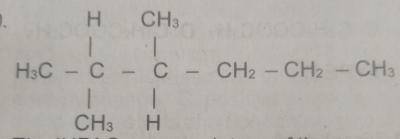
The IUPAC nomenclature of the compound above is
- A. 2-ethylpentane
- B. 3,4-dimethylhexane
- C. 2,3-dimethylhexane
- D. 2-ethylhexane
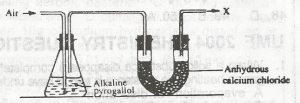
In the experiment above, X is a mixture of nitrogen, carbon (IV) oxide and
- A. water
- B. impurities
- C. inert gas
- D. oxygen
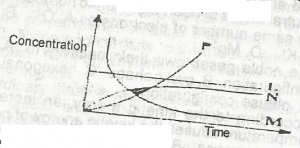
2HCI(ag) + CaCO\(_3\)(s) → CaCl\(_2\)(s) + CO\(_2\)(g) + H\(_2\)O(l). From the reaction above, which of the curves in the diagram represents the production of carbon (IV) oxide as dilute HCI is added?
- A. L
- B. M
- C. N
- D. P
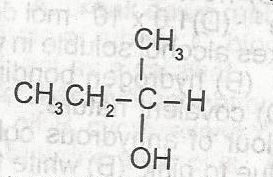
The compound above is
- A. glycol
- B. primary alkanol
- C. secondary alkanol
- D. tertiary alkanol

The major product of the dehydration of the compound above is?
- A. A
- B. B
- C. C
- D. D
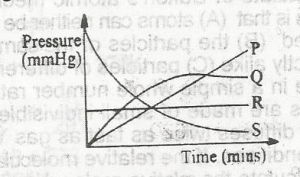
In the diagram above, the curve that represents the production of oxgyen gas from the decomposition of KCIO3 in the presence of MnO2 catalyst is
- A. R
- B. P
- C. S
- D. Q
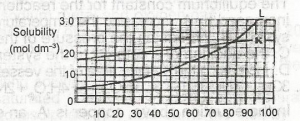
Use the solubility curves below to answer the question. If 1 dm\(^3\) of a saturated solution of L at 60\(^0\)C is cooled to 25\(^0\)C, what amount in mole will separate out?
- A. 0.75
- B. 0.25
- C. 1.00
- D. 0.50

The diagram above represents the formation of
- A. a metallic bond
- B. an electrovalent bond
- C. a covalent bond
- D. a coordinate covalent bond
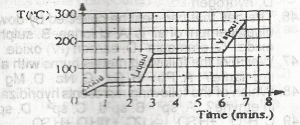
Use the graph above to answer this question.How long does it take all the solid to melt?`
- A. 2.5 mins
- B. 6.0 mins
- C. 1.0 min
- D. 3.0 mins
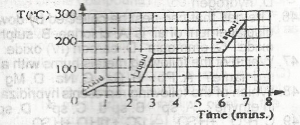
Use the graph above to answer this question.If the gas is cooled, at what temperature will it start to condense?
- A. 125 oC
- B. 150oC
- C. 175oC
- D. 250oC



